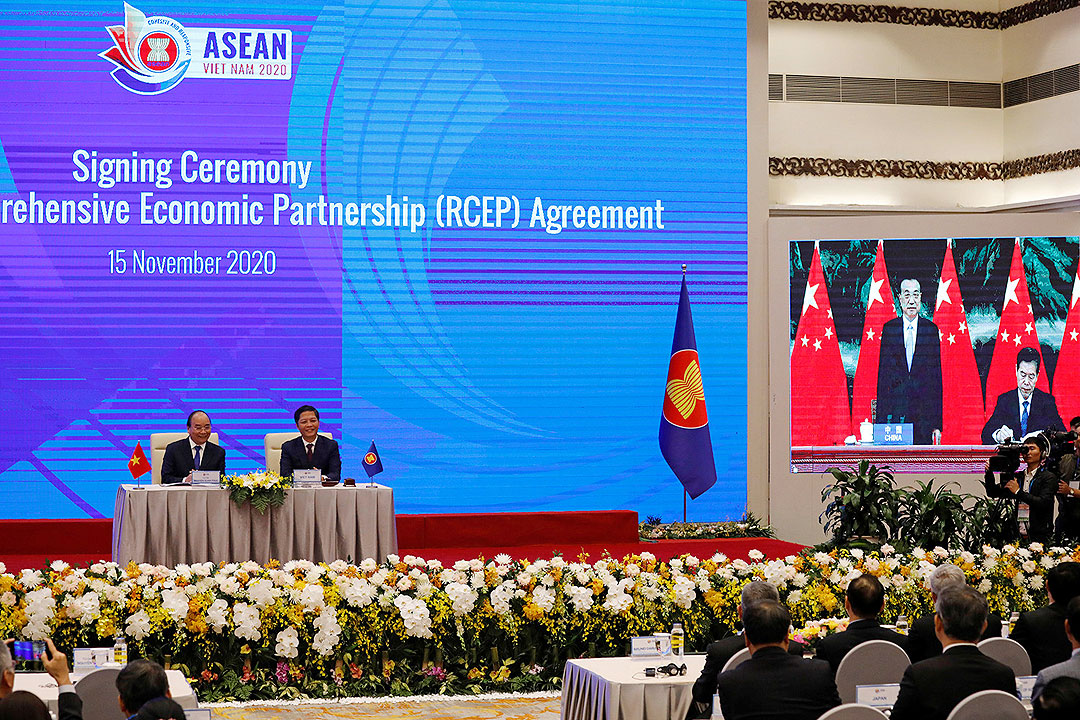THE Regional Comprehensive Economic Partnership (RCEP) trade agreement will improve gross domestic product (GDP) growth by 0.84 percentage points and the balance of trade by $51.7 million by the end of the decade, a US economist said.
“RCEP is initially estimated to improve the country’s trade balance by as much as $51.7-M, increasing overall welfare by $573.7-M, contributing to 0.84% real GDP growth, and lowering poverty incidence by 4.97% in 2030,” Caesar B. Cororaton, a senior research fellow with the Virginia Polytechnic Institute and State University (Virginia Tech), was quoted as saying in a statement from the Trade department Tuesday.
Mr. Cororaton models the impact of regional trade agreements on global economies.
The Philippines, along with all the members of the Association of Southeast Asian Nations (ASEAN) and other countries, signed the RCEP on Nov. 15, 2020.
RCEP is a free trade agreement (FTA) which combines active regional FTAs with those agreed with Australia, China, Japan, South Korea, and New Zealand into a single economic partnership.
“The agreement… represents 51% of the Philippines’ exports, 68% of the country’s imports, and 58% of FDI (foreign direct investments) in 2020,” the Department of Trade and Industry said.
According to Trade Secretary Ramon M. Lopez, the benefits of participating in the RCEP outweigh the costs of not joining.
“The RCEP provides for a framework aimed at further lowering trade barriers, and securing improved market access for goods and services for businesses in the region characterized by a $2.3 billion potential consumer base, and a collective GDP that makes up almost 1/3 of the world’s GDP, global trade, and global inward foreign direct investments,” he said.
International trade law expert Anthony A. Abad considers participation in RCEP to be imperative and not optional. “For any self-respecting, internationalizing nation, you need to be part of these international trade agreements,” he said.
President Rodrigo R. Duterte signed the RCEP agreement on Sept. 2, and is now in the Senate for its concurrence. — Angelica Y. Yang
